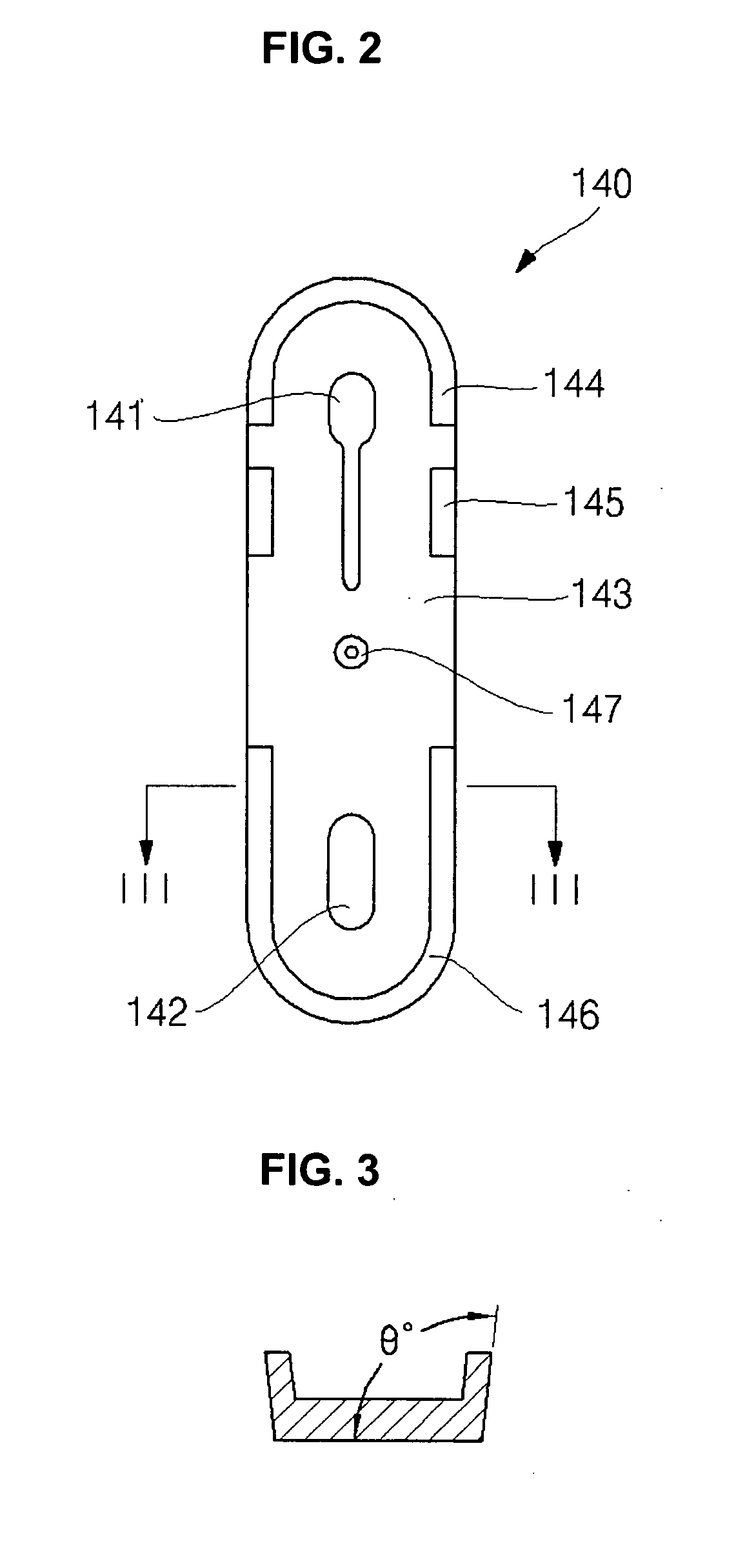Secondary battery and the fabrication method thereof
- Summary
- Abstract
- Description
- Claims
- Application Information
AI Technical Summary
Benefits of technology
Problems solved by technology
Method used
Image
Examples
Embodiment Construction
[0032]Hereinafter, preferred embodiments of the invention will be described in detail with reference to FIGS. 1 to 6.
[0033]FIG. 1 is an exploded view illustrating a secondary battery according to a preferred embodiment of the invention.
[0034]A secondary battery 100 comprises an electrode assembly 120 which is accommodated in a container (preferably a can) 110, a cap 130 connected to the top of the opening of the can 110 in a state where the electrode assembly 120 is accommodated in the can 110 and an insulating member 140 interposed between the electrode assembly 120 and the cap 130 for insulating them.
[0035]The electrode assembly 120 is preferably obtained by forming a positive electrode 121 and a negative electrode 123 which have plate shapes so as to increase electric capacity, and interposing a separator 122 between the positive electrode 121 and the negative electrode 123 to be laminated and winding them in the form of a vortex to be formed so-called “Jelly Roll.” The negative ...
PUM
| Property | Measurement | Unit |
|---|---|---|
| Angle | aaaaa | aaaaa |
| Diameter | aaaaa | aaaaa |
| Shape | aaaaa | aaaaa |
Abstract
Description
Claims
Application Information
 Login to View More
Login to View More - R&D
- Intellectual Property
- Life Sciences
- Materials
- Tech Scout
- Unparalleled Data Quality
- Higher Quality Content
- 60% Fewer Hallucinations
Browse by: Latest US Patents, China's latest patents, Technical Efficacy Thesaurus, Application Domain, Technology Topic, Popular Technical Reports.
© 2025 PatSnap. All rights reserved.Legal|Privacy policy|Modern Slavery Act Transparency Statement|Sitemap|About US| Contact US: help@patsnap.com



